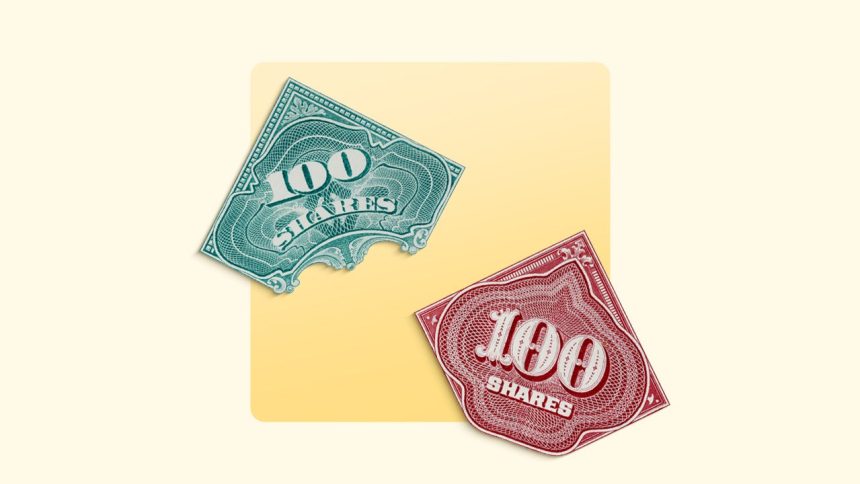Images by GettyImages; illustration by Hunter Newton/Bankrate
Options trading can be complex, and the trading jargon may confuse even experienced investors and traders. Two of the most common options contracts to understand are call and put options. Here’s what options traders should know about these popular contracts.
What are call options and put options?
Call options and put options are two of the most popular options contracts. Here’s what comes with each one.
- Call option: A call option gives its buyer the right, but not the obligation, to buy a stock at the strike price prior to the expiration date.
- Put option: A put option gives its buyer the right, but not the obligation, to sell a stock at the strike price prior to the expiration date.
When you buy a call or put option, you pay a premium, which is the price of the option contract. If you buy an option and it expires worthless, you lose the premium you paid.
Buying call and put options: How it works
When you buy a call option on a stock, you’re making a bet that the price of the underlying stock will increase by at least a certain amount before the expiration date of the option. The breakeven price of the option is equal to the strike price plus the option premium.
For example, say Tesla’s stock trades at $300, but you think it’s headed higher over the next few months. You purchase a six-month option with a strike price of $350 and an option premium of $20 per share. The breakeven price would be $370 per share and your maximum loss would be the $20 per share option premium.
Put options work similarly, but instead of making a bet that the price of the underlying stock will increase, you’re betting that the underlying stock will decline. When you buy a put option, the breakeven price is equal to the strike price minus the option premium.
For example, say Tesla’s stock trades at $300, but you think it’s headed lower over the next few months. You purchase a six-month option with a strike price of $250 and an option premium of $20 per share. The breakeven price would be $230 per share and your maximum loss would be the $20 per share option premium.
Here’s a summary:
| Buying a call option | Buying a put option | |
| Type of bet | Bullish | Bearish |
| Breakeven price | Strike price plus premium | Strike price minus premium |
| Right | Right to buy at strike price | Right to sell at strike price |
| Maximum loss | Cost of the option | Cost of the option |
Selling call and put options: How it works
It’s also possible to be a seller of call and put options. You might sell, or write, call and put options for a variety of reasons, such as earning income in the form of the option premium or protecting against losses in a stock you own.
When you sell a call option, you have the obligation to deliver the underlying stock if the call option buyer exercises the option. As the seller of a call option, you hope the stock price stays below the strike price, so that the option expires worthless and you keep the option premium received as your profit.
If you sell a put option, you have the obligation to buy the underlying stock at the strike price if the option is exercised by the buyer. Your goal would be to have the stock price stay above the strike price and have the option expire worthless, allowing you to pocket the option premium as profit.
Here’s a summary:
| Selling a call option | Selling a put option | |
| Type of bet | Bearish | Bullish |
| Breakeven price | Strike price plus premium | Strike price minus premium |
| Obligation | Sell the stock to buyer at strike price | Buy the stock from buyer at strike price |
| Maximum loss | Unlimited | Strike price minus premium |
Risks of call and put options
Buying and selling call and put options does come with risk. Here are a few to be aware of:
- Have to be right about the stock’s direction: You have to correctly predict which way the stock will move in a given time period.
- Have to be right about the amount of the stock price move: You have to correctly predict how big of a move the stock will make in a given time period.
- Have to be right about the timing of the change in stock price: You have to correctly predict the time frame when a stock will move.
If you’re wrong about any of these, you could lose the cost of the option (or worse if you’re writing calls and puts).
Bottom line
Options trading involves risk and should only be considered by experienced traders. Call and put options allow traders to profit off a certain move in an underlying stock over a given time period. You can also sell call and put options in order to collect the premium as income or to hedge against losses, among other reasons.
Editorial Disclaimer: All investors are advised to conduct their own independent research into investment strategies before making an investment decision. In addition, investors are advised that past investment product performance is no guarantee of future price appreciation.
Read the full article here
















